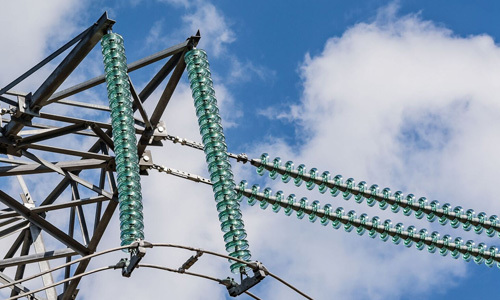Characteristics of Composite Insulator Structure
2025-02-13
Composite insulators are a special type of insulator primarily used in low-voltage overhead distribution lines, made from special materials, playing a crucial role in their application. When using plastic composite insulators, attention should be paid to certain usage methods and precautions to avoid aging of the insulators, which can have a certain impact on the equipment, damaging its effectiveness and failing to provide insulation.
Plastic composite insulators for low-voltage overhead distribution lines generally use high-density polyethylene as the main material, with anti-aging agents added and formed by extrusion in one go, and can be made into various low-voltage insulators according to different Applications of the insulators.
Compared to traditional porcelain insulators, this type of insulator can reduce costs, facilitate construction, improve work efficiency, and its failure rate is almost zero, with outstanding performance, strong applicability, and reliability, making it a relatively ideal insulator for low-voltage overhead distribution lines.
Plastic composite insulators have relatively good advantages, demonstrating outstanding application value during use, improving project efficiency, ensuring the normal progress and implementation of construction, and reducing project costs and expenses.
Composite insulators installed on transmission lines may experience a decrease in insulation resistance, cracking, or breakdown due to long-term exposure to electromechanical loads, sunlight, rain, and temperature changes during operation, posing a potential threat to power supply reliability. Therefore, online testing of composite insulators is of great significance.
On high-voltage transmission lines, the aging of composite insulators directly threatens the operation of the power system, directly affecting the performance of the power system. Aging insulators, especially zero-value insulators, are not only prone to overheating and expansion, leading to cracking at the insulator head and causing line break incidents, but also have low flashover voltage, reducing the insulation level of high-voltage lines.
Zero-value insulators refer to insulators whose potential distribution at both ends approaches or equals zero during operation. The impact of zero-value or low-value insulators (the insulation resistance of low-value and zero-value insulators generally ranges from 0 MΩ to 300 MΩ): the insulation of the line conductors depends on the insulator string, and due to manufacturing defects or external factors, the insulation performance of the insulators continuously deteriorates. When the insulation resistance decreases or reaches zero, it is termed as low-value or zero-value insulators. They significantly affect line operation; according to incomplete statistics, the proportion of zero-value or low-value insulators among the line's suspended porcelain insulators is approximately 0.3%.
Key words:
Glass insulator
Related News
Customers from several countries visited our factory for inspection.
2025-04-27
What are the characteristics of glass insulators?
2024-05-22
In one minute, let you understand glass insulators.
2024-05-22



















